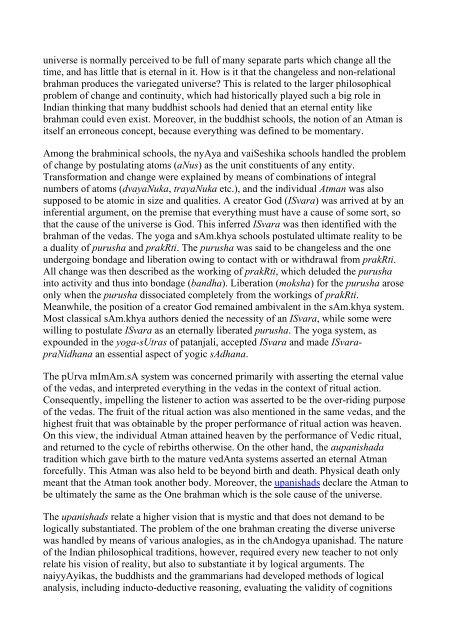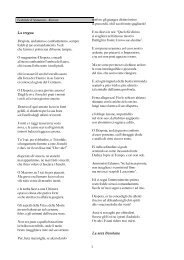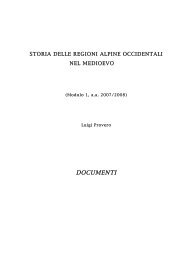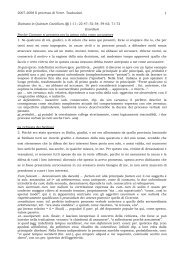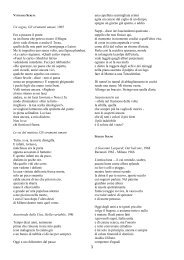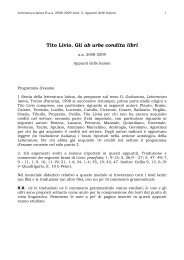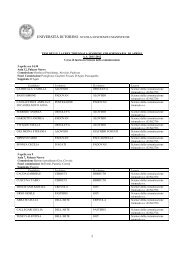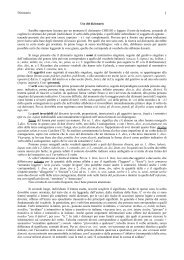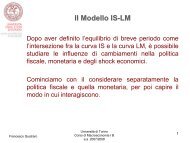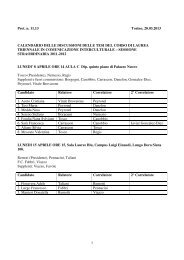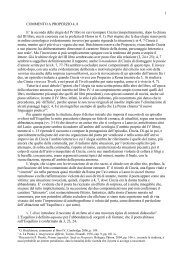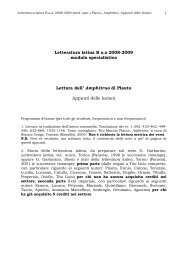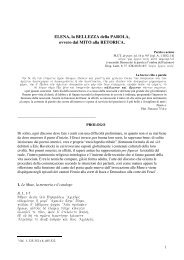ajAti vAda
ajAti vAda
ajAti vAda
You also want an ePaper? Increase the reach of your titles
YUMPU automatically turns print PDFs into web optimized ePapers that Google loves.
universe is normally perceived to be full of many separate parts which change all the<br />
time, and has little that is eternal in it. How is it that the changeless and non-relational<br />
brahman produces the variegated universe? This is related to the larger philosophical<br />
problem of change and continuity, which had historically played such a big role in<br />
Indian thinking that many buddhist schools had denied that an eternal entity like<br />
brahman could even exist. Moreover, in the buddhist schools, the notion of an Atman is<br />
itself an erroneous concept, because everything was defined to be momentary.<br />
Among the brahminical schools, the nyAya and vaiSeshika schools handled the problem<br />
of change by postulating atoms (aNus) as the unit constituents of any entity.<br />
Transformation and change were explained by means of combinations of integral<br />
numbers of atoms (dvayaNuka, trayaNuka etc.), and the individual Atman was also<br />
supposed to be atomic in size and qualities. A creator God (ISvara) was arrived at by an<br />
inferential argument, on the premise that everything must have a cause of some sort, so<br />
that the cause of the universe is God. This inferred ISvara was then identified with the<br />
brahman of the vedas. The yoga and sAm.khya schools postulated ultimate reality to be<br />
a duality of purusha and prakRti. The purusha was said to be changeless and the one<br />
undergoing bondage and liberation owing to contact with or withdrawal from prakRti.<br />
All change was then described as the working of prakRti, which deluded the purusha<br />
into activity and thus into bondage (bandha). Liberation (moksha) for the purusha arose<br />
only when the purusha dissociated completely from the workings of prakRti.<br />
Meanwhile, the position of a creator God remained ambivalent in the sAm.khya system.<br />
Most classical sAm.khya authors denied the necessity of an ISvara, while some were<br />
willing to postulate ISvara as an eternally liberated purusha. The yoga system, as<br />
expounded in the yoga-sUtras of patanjali, accepted ISvara and made ISvarapraNidhana<br />
an essential aspect of yogic sAdhana.<br />
The pUrva mImAm.sA system was concerned primarily with asserting the eternal value<br />
of the vedas, and interpreted everything in the vedas in the context of ritual action.<br />
Consequently, impelling the listener to action was asserted to be the over-riding purpose<br />
of the vedas. The fruit of the ritual action was also mentioned in the same vedas, and the<br />
highest fruit that was obtainable by the proper performance of ritual action was heaven.<br />
On this view, the individual Atman attained heaven by the performance of Vedic ritual,<br />
and returned to the cycle of rebirths otherwise. On the other hand, the aupanishada<br />
tradition which gave birth to the mature vedAnta systems asserted an eternal Atman<br />
forcefully. This Atman was also held to be beyond birth and death. Physical death only<br />
meant that the Atman took another body. Moreover, the upanishads declare the Atman to<br />
be ultimately the same as the One brahman which is the sole cause of the universe.<br />
The upanishads relate a higher vision that is mystic and that does not demand to be<br />
logically substantiated. The problem of the one brahman creating the diverse universe<br />
was handled by means of various analogies, as in the chAndogya upanishad. The nature<br />
of the Indian philosophical traditions, however, required every new teacher to not only<br />
relate his vision of reality, but also to substantiate it by logical arguments. The<br />
naiyyAyikas, the buddhists and the grammarians had developed methods of logical<br />
analysis, including inducto-deductive reasoning, evaluating the validity of cognitions


